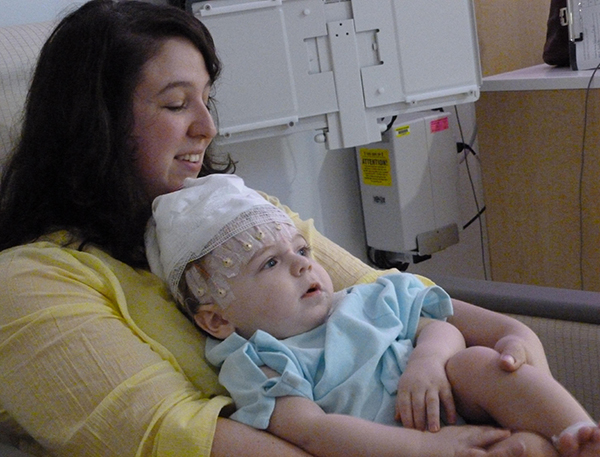Scientists at the University of Utah (U of U) Health report that they have developed high-tech tools to uncover the genetic cause of early infantile epileptic encephalopathy (EIEE). Their study (“Whole-genome analysis for effective clinical diagnosis and gene discovery in early infantile epileptic encephalopathy”) appears online in Nature Genomic Medicine.
“Early infantile epileptic encephalopathy (EIEE) is a devastating epilepsy syndrome with onset in the first months of life. Although mutations in more than 50 different genes are known to cause EIEE, current diagnostic yields with gene panel tests or whole-exome sequencing are below 60%. We applied whole-genome analysis (WGA) consisting of whole-genome sequencing and comprehensive variant discovery approaches to a cohort of 14 EIEE subjects for whom prior genetic tests had not yielded a diagnosis. We identified both de novo point and INDEL mutations and de novo structural rearrangements in known EIEE genes, as well as mutations in genes not previously associated with EIEE,” write the investigators.
“The detection of a pathogenic or likely pathogenic mutation in all 14 subjects demonstrates the utility of WGA to reduce the time and costs of clinical diagnosis of EIEE. While exome sequencing may have detected 12 of the 14 causal mutations, three of the 12 patients received nondiagnostic exome panel tests prior to genome sequencing. Thus, given the continued decline of sequencing costs, our results support the use of WGA with comprehensive variant discovery as an efficient strategy for the clinical diagnosis of EIEE and other genetic conditions.”
“These tools let us peek in the dark corners and under the rug of the genome that other methods do not,” says Aaron Quinlan, Ph.D., associate professor of human genetics and biomedical informatics at U of U Health and senior author on the paper. “With this approach rather than undergoing multiple tests, families can receive results faster, limiting their medical odyssey, at ultimately a lower cost.”
“Most patients are on four to five medications and still suffer from frequent, debilitating seizures, from once a week to 50 times a day,” adds Betsy Ostrander, Ph.D., assistant professor of pediatrics at U of U Health and the division of pediatric neurology at Primary Children’s Hospital and first author on the paper.
If the condition is not diagnosed early and treated with the available medications, the seizures hinder normal development, leading to intellectual impairment and often an early death. Although more than 50 genes are associated with the disease, routine genetic tests fail half the time to pinpoint the cause of the illness, limiting the medical practitioner’s ability to alleviate the child’s symptoms.
Dr. Ostrander and her colleagues turned to experts in bioinformatics at the university to help them sift through the volume of genetic information obtained from 14 patients and their parents.
All of the patients in the study had previously undergone several rounds of genome testing, such as clinical gene panels and chromosomal microarrays, but these methods failed to find the genetic cause of their illness. According to Dr. Quinlan, these tests were too low resolution or only focused on already identified causative genes to identify the mutation. He and his team created an array of computational tools that contain algorithms to scrutinize the genetic data and identify errors that lead to disease. They applied their suite of computational tools to all of the genetic information from the patients and their parents to pinpoint changes in the genome responsible for disease development.
In the study, they found a spontaneous mutation was responsible for EIEE for 12 of the 14 patients. In one of these patients, the mutation was found on a gene not previously associated with the disease. The researchers also identified large structural changes (a translocation and a duplication) in the genome of the remaining two patients. These structural changes affected genes previously linked to EIEE but were undetectable through standard genome testing techniques.
“These families have been drifting through expensive prolonged testing with little hope of finding an answer,” Dr. Ostrander says. “We can now identify the genetic cause of EIEE and select medications best suited to each patient to decrease the frequency of seizures earlier and hopefully prevent developmental delays.”
Dr. Quinlan admits that cost is still a limiting factor in deploying this approach more widely. In addition, not every rare disease is associated with a clear genetic change.
The tools in this study, developed by the University of Utah computational teams (RUFUS, GEMINI, GENE.IOBIO, and LUMPY) are available to researchers on the USTAR Center for Genetic Discovery website.






